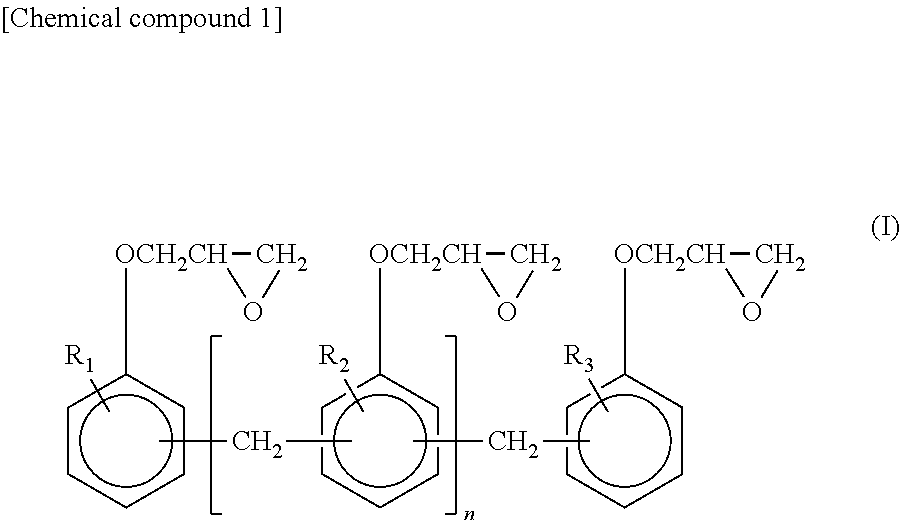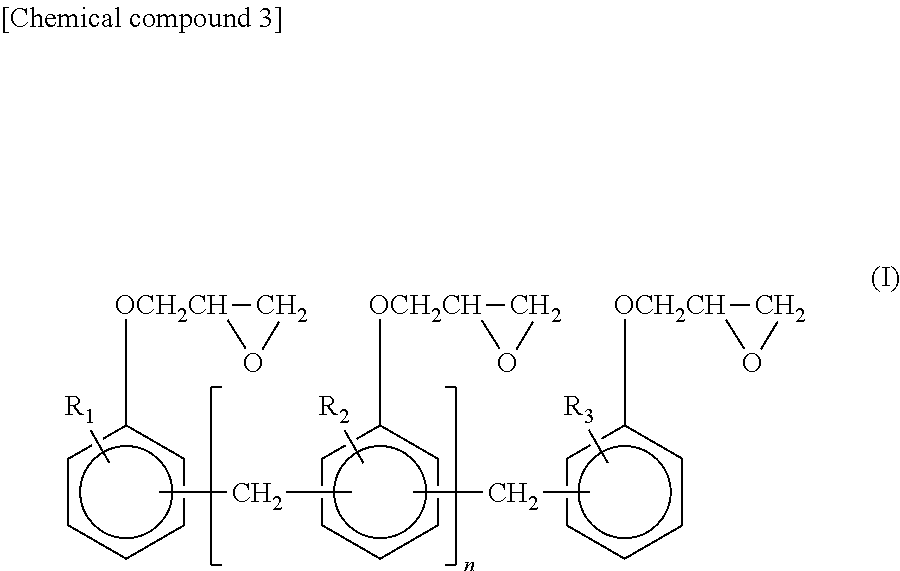Epoxy resin composition, prepreg, and fiber reinforced composite material
a technology of epoxy resin and composite material, which is applied in the direction of synthetic resin layered products, layered products, chemistry apparatus and processes, etc., can solve the problems of insufficient storage stability and loss of long-term storage stability, and achieve high heat resistance, high compatibility, and efficient control of the flowability of epoxy resin composition
- Summary
- Abstract
- Description
- Claims
- Application Information
AI Technical Summary
Benefits of technology
Problems solved by technology
Method used
Image
Examples
example 1
[0145]Using 30 parts by mass of jER (registered trademark) 154, 40 parts by mass of jER (registered trademark) 828, and 30 parts by mass of jER (registered trademark) 100 as the epoxy resin component [A], together with 5.3 parts by mass of DICY7 as the dicyandiamide component [B], 3.0 parts by mass of DCMU99 as the aromatic urea compound component [C], 3.0 parts by mass of Cureduct (registered trademark) L-07N as a mixture containing the boric ester component [D], and 3.0 parts by mass of Vinylec (registered trademark) K as thermoplastic resin, an epoxy resin composition was prepared according to the described above. More specifically, 3.0 parts by mass of DCMU99 and 3.0 parts by mass of Cureduct (registered trademark) L-07N were added to 10 parts by mass of [A]-1 (jER (registered trademark) 828), which is a liquid (10 parts by mass of the 100 parts by mass of the epoxy resin component [A]), and kneaded at room temperature using a kneader. A three roll mill was set and the mixture ...
examples 2 to 16
[0151]Except for using the resin components that are shown in Tables 1 to 3, epoxy resin compositions, cured resin materials, and prepreg samples were prepared by carrying out the same procedure as in Example 1. All the resulting prepreg samples exhibited a sufficiently high tackiness and drapability as in the case of Example 1.
[0152]The epoxy resin compositions obtained in these Examples gave T (100) and T (60) values as shown in Tables 1 to 3.
[0153]The prepreg samples were subjected to evaluation for the curing speed, storage stability and stability against heat history as in Example 1 and they were found to show a sufficiently high curing speed, storage stability and stability against heat history at all test levels.
[0154]All cured resin materials obtained exhibited favorable elastic modulus and deflection values, and the CFRP products obtained also exhibited good mechanical characteristics.
PUM
| Property | Measurement | Unit |
|---|---|---|
| temperature | aaaaa | aaaaa |
| temperature | aaaaa | aaaaa |
| bending elastic modulus | aaaaa | aaaaa |
Abstract
Description
Claims
Application Information
 Login to View More
Login to View More - R&D
- Intellectual Property
- Life Sciences
- Materials
- Tech Scout
- Unparalleled Data Quality
- Higher Quality Content
- 60% Fewer Hallucinations
Browse by: Latest US Patents, China's latest patents, Technical Efficacy Thesaurus, Application Domain, Technology Topic, Popular Technical Reports.
© 2025 PatSnap. All rights reserved.Legal|Privacy policy|Modern Slavery Act Transparency Statement|Sitemap|About US| Contact US: help@patsnap.com



